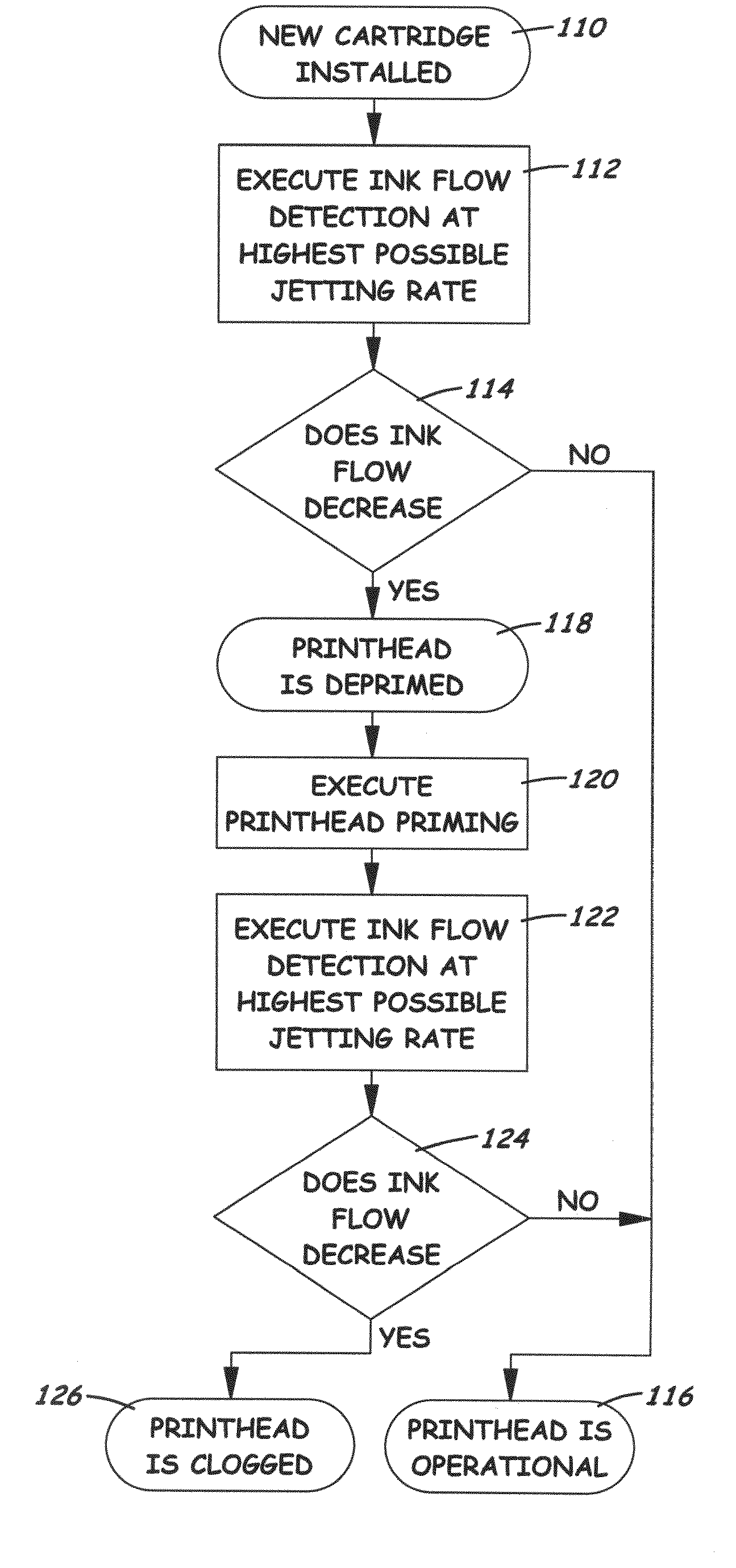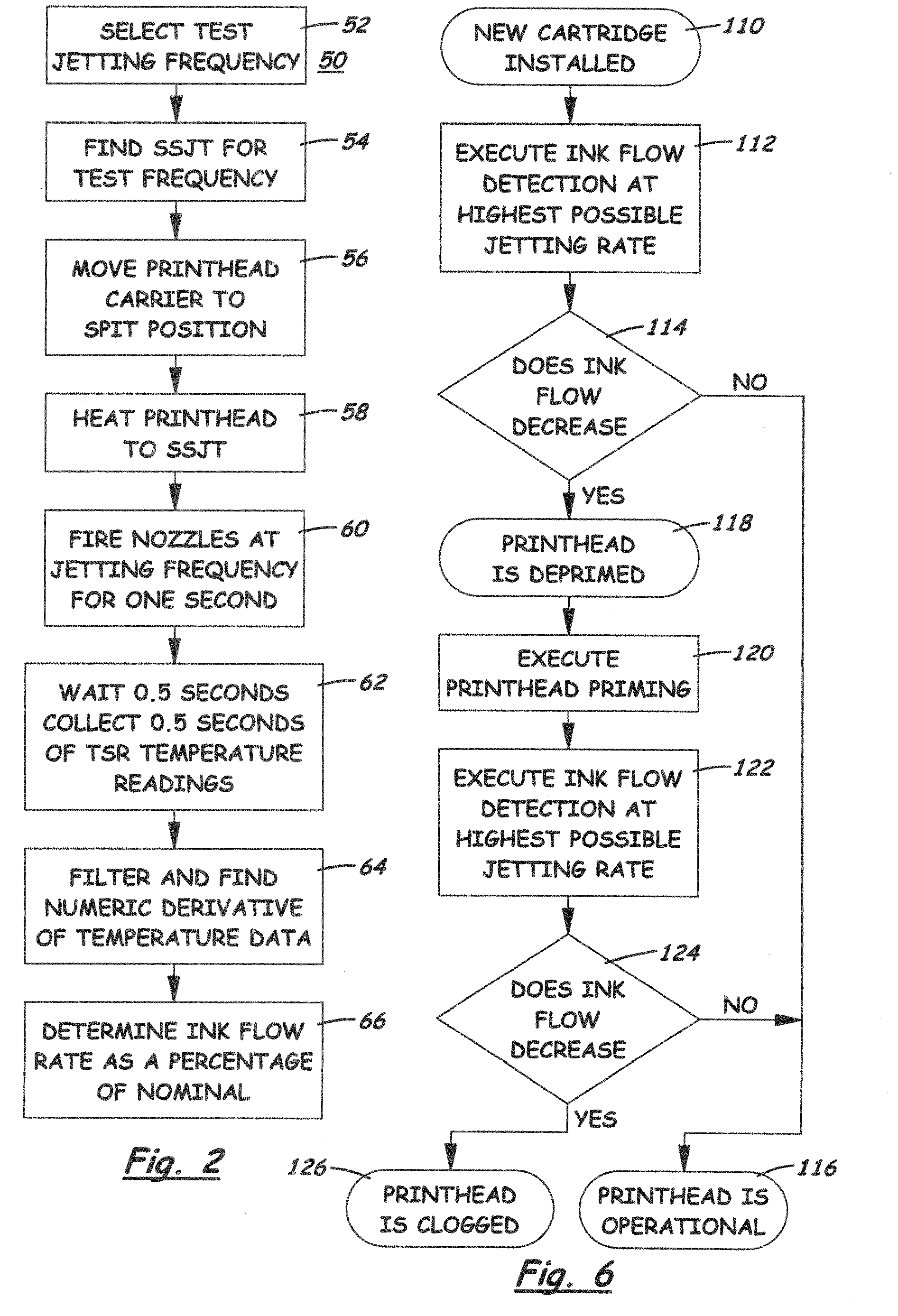Method for measuring ink flow rate in an inkjet printhead
a technology of inkjet printhead and flow rate, which is applied in the direction of printing, other printing apparatus, etc., can solve the problems of inability to deliver ink at inability to determine when an inkjet cartridge is out of ink, and pressure too high to achieve the expected jetting rate, so as to reduce the flow rate of ink, increase the temperature of the substrate, and reduce the effect of ink flow ra
- Summary
- Abstract
- Description
- Claims
- Application Information
AI Technical Summary
Benefits of technology
Problems solved by technology
Method used
Image
Examples
Embodiment Construction
[0022]FIG. 1 illustrates in block diagram form the functional aspects of a thermal inkjet printer 10. The printer 10 as a whole is controlled by a programmed microprocessor 12 connected to a ROM 14 and RAM 16. The microprocessor 12 controls a controller 18 which may comprise an ASIC specially designed to control the particular type of printhead 20. The microprocessor 12 is connected to the ASIC 18 by a bus 23. The control could be a combined ASIC and microprocessor, or the controller 18 could be implemented entirely as hardware circuits. In any event, the ASIC chip 18 includes a heating algorithm for driving the print control circuit 34, which is often integrated into the printhead 20. The ASIC 18 can heat the printhead substrate 24 using non-nucleating heating (NNH) techniques. With this technique, the printhead 20 is driven in a manner to effectively cause the nozzle heaters to heat the surrounding substrate, but not enough to nucleate the ink in the nozzle cavities and cause jett...
PUM
 Login to View More
Login to View More Abstract
Description
Claims
Application Information
 Login to View More
Login to View More - R&D
- Intellectual Property
- Life Sciences
- Materials
- Tech Scout
- Unparalleled Data Quality
- Higher Quality Content
- 60% Fewer Hallucinations
Browse by: Latest US Patents, China's latest patents, Technical Efficacy Thesaurus, Application Domain, Technology Topic, Popular Technical Reports.
© 2025 PatSnap. All rights reserved.Legal|Privacy policy|Modern Slavery Act Transparency Statement|Sitemap|About US| Contact US: help@patsnap.com



